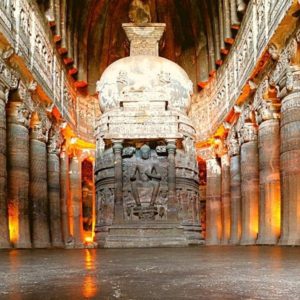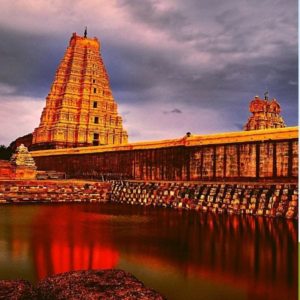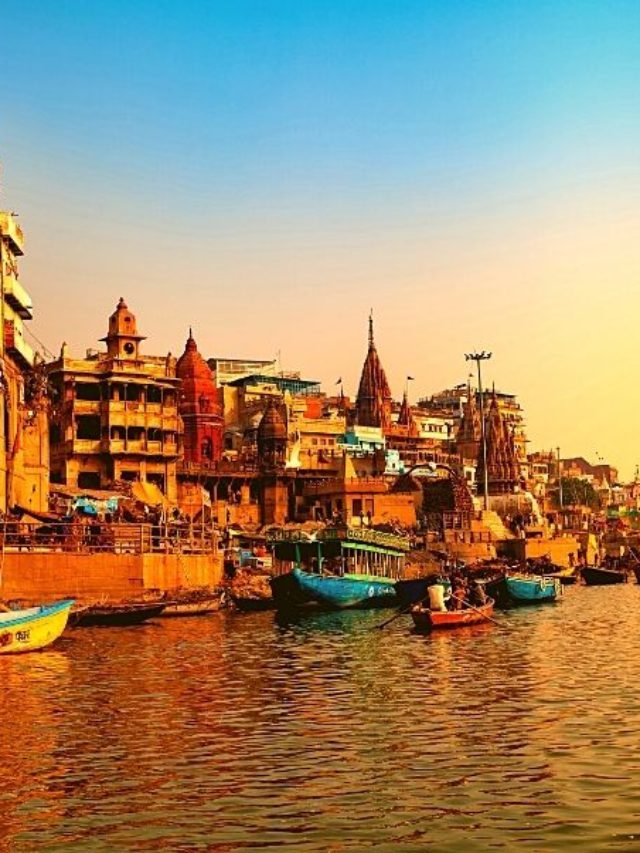Make your India Tour really Unique and Special by including one or Cultural Destinations like Varanasi, Ajanta Ellora Caves, Hampi, Khajuraho or any other from the list below.
Cultural Destinations (Varanasi, Ajanta Ellora, Khajuraho, Hampi)
Add Multiple Tour Packages to your Cart and Book A Grand India Tour
We will book all Inter-Connecting Flights, Hotels, Cars, and Guides! Contact us for details.
Private Luxury Cultural Tours
-

Mesmerizing Varanasi
$650 – $850 Select options This product has multiple variants. The options may be chosen on the product pageAdd to WishlistAdd to Wishlist -

Buddhist Circuit
$2,650 – $2,920 Select options This product has multiple variants. The options may be chosen on the product pageAdd to WishlistAdd to Wishlist -

Khajuraho – The Land of Kamasutra
$850 – $1,000 Select options This product has multiple variants. The options may be chosen on the product pageAdd to WishlistAdd to Wishlist -

Ajanta Ellora Caves
$850 – $1,200 Select options This product has multiple variants. The options may be chosen on the product pageAdd to WishlistAdd to Wishlist -

Fascinating Hampi
$1,100 – $1,550 Select options This product has multiple variants. The options may be chosen on the product pageAdd to WishlistAdd to Wishlist -

Dharamshala
$1,100 – $1,550 Select options This product has multiple variants. The options may be chosen on the product pageAdd to WishlistAdd to Wishlist -

Amritsar and the Golden Temple
$650 – $850 Select options This product has multiple variants. The options may be chosen on the product pageAdd to WishlistAdd to Wishlist -

Colors of Mumbai
$850 – $1,200 Select options This product has multiple variants. The options may be chosen on the product pageAdd to WishlistAdd to Wishlist -

Pondicherry and Mahabalipuram
$1,250 – $1,950 Select options This product has multiple variants. The options may be chosen on the product pageAdd to WishlistAdd to Wishlist -

South Indian Temples
$2,450 – $2,810 Select options This product has multiple variants. The options may be chosen on the product pageAdd to WishlistAdd to Wishlist -

Golden Triangle with Wildlife Safari and Varanasi
$2,950 – $4,100 Select options This product has multiple variants. The options may be chosen on the product pageAdd to WishlistAdd to Wishlist -

Taj Mahal, Varanasi and Rajasthan
$4,400 – $6,450 Select options This product has multiple variants. The options may be chosen on the product pageAdd to WishlistAdd to Wishlist -

Complete Buddhist Circuit with Dharamshala and Taj Mahal
$3,200 – $4,010 Select options This product has multiple variants. The options may be chosen on the product pageAdd to WishlistAdd to Wishlist -

Sarnath
$650 – $850 Select options This product has multiple variants. The options may be chosen on the product pageAdd to WishlistAdd to Wishlist
Find More Tours
Places to Visit
Boat Ride and Heritage Walk: Early morning undertake the boat ride on the river Ganga and observe the religious rituals being conducted on the Ghats of Varanasi. This is the time that the city wakes up. So, you would find religious people worshipping the sun and the river ganga, some washing clothes, some taking a dip. It is a sight worth experiencing.
Next, you may take a heritage walk, observe the daily life of natives on the streets of Varanasi. You may want to explore some famous temples and Ghats like Kashi Vishwanath, Nepali temple, Manikarnika Ghat, Durga Devi temple.
Evening River Cruise (Alakananda): Enjoy the River Cruise in Varanasi for about an hour and a half. After sunset, the Ghats are lit up with beautiful decorative lights. The Ghats can be seen as a yellow half-circle of light from either end. Guests can also have a glimpse of the famous Ganga Aarti of Dashashwamedh Ghat. This is a memorable experience.
Ganga Aarti: If you reach Varanasi before evening, witness the major attraction of Varanasi – The grand Aarti ceremony performed by several priests on the banks of river Ganga. You will get to hear the majestic blended sound of Sanskrit mantras, drums, bells and cymbals. Experience the colorful and energetic Varanasi…the vibrant Varanasi that is so unique.
Sarai Mohana: Visit the famous Bari Bazaar area of Varanasi. Here you will watch the artisans weaving beautiful fabrics from silk threads, creating the world-renowned Banarasi silk sarees. They are known for their gold and silver brocade or zari, fine silk and opulent embroidery. They are worn by Indian brides, Indian women on the occasions of festivals and in marriage parties.
Trip to Sarnath: Sarnath is a city located 13 kilometers from Varanasi. It is one of the four holiest cities of the Buddhist religion. The deer park in Sarnath is where Gautama Buddha first taught the Dharma after attaining enlightenment. Experience bliss as you visit the Stupas and other holy places in Sarnath.
Bibi Ka Maqbara: The Bibi Ka Maqbara or “Tomb of the Lady” is a tomb located in Aurangabad. It bears a striking resemblance to the famous Taj Mahal. It may be worth a visit during your Tour to Ajanta and Ellora Caves.
Daulatabad Fort: Daulatabad Fort, which is also known as Devagiri Fort, lies 11km from Aurangabad and 16 km away from the Ellora Caves. It is one of the most powerful forts of the medieval deccan period and is among the most famous forts in India. It has been played an important part in India’s history. Standing on 700 feet high hill, even today, the fort is in a very good condition.
Ajanta Caves: The Ajanta Caves are a UNESCO World Heritage Site. It is approximately 30 rock-cut Buddhist cave monuments, which date from the 2nd century to about 480 CE. The caves include numerous paintings and rock-cut sculptures. These are undoubtedly some of the finest surviving examples of ancient World art. The Ajanta Caves 16, 17, 1 and 2 form the largest corpus of surviving ancient Indian wall-painting.
Aurangabad to Ajanta Caves – It is about 100 KM or 65 Miles one way and takes about 3 to 4 hours.
Ellora Caves: Ellora caves is one of the largest rock-cut monastery-temple caves complexes in the world. The site presents monuments and artwork of Buddhism, Hinduism and Jainism from the 600-1000 CE period. Cave 16 of Ellora features the largest single monolithic rock excavation in the world. The site features over 100 caves, of which 34 caves are open to public. These consist of 12 Buddhist (caves 1–12), 17 Hindu (caves 13–29) and 5 Jain (caves 30–34) caves.
Adinath Temple: This is a Jain temple, which is dedicated to the Jain God Tirthankara. It is decorated by a single towered shikara, which enhances the beauty of the shrine. The walls of the temple have beautiful carvings depicting images and postures of court musicians.
Brahma Temple: The walls of the temples are unadorned with heavy figurative work. I is one of the oldest structures in the Eastern Group of Temples. The temple is named after Lord Brahma owing to the presence of a four-faced idol in the sanctum, which represents the Creator of the World as per Hindu philosophy.
Eastern Group of Temples in Khajuraho: The Eastern Group of Temples of Khajuraho can be divided into two, the temples dedicated to the Jain pantheon and the temples dedicated to Hindu Gods and Goddesses.
Javari Temple: The Javari Temple is dedicated to Lord Vishnu. It attracts tourists from every nook and corner of the world because of its exquisite architecture and intricate design. The elaborate gateway of the Javari Temple in Khajuraho is one of its characteristic features.
Kandariya Mahadev Temple: Built around 1025-1050 AD, this temple exudes grandeur and finesse in its architecture. With beautiful frescos of women in various postures adorning the walls of this temple, this place is one of the most stunning tourists sites in Khajuraho. It has an artistically engraved shrine with over 800 images of women. Made of a typical sandstone structure, the artistic representation of eroticism are depicted on the walls of this temple.
Laxman Temple: The Laxman Temple is the oldest and most aesthetically pleasing temples in Khajuraho. In fact, the trinity of Hindu Gods – Brahma, Vishnu and Shiva – is depicted in the horizontal beam, which you will find over the entrance of the temple. The Laxman Temple in Khajuraho is one of the biggest temples.
Matangeshwar Temple: Matangeshwar Temple is a beautifully designed temple dedicated to Lord Shiva. Made of sandstone, the temple houses a large Shivalinga which has Nagari and Persian inscriptions carved on it.
Western Group of Temples in Khajuraho: The Western Group of Temples in Khajuraho is a landscaped complex of ornate 11th-century temples built during the Chandela dynasty.
Elephant’s Stables: The Elephant Stable is an impressive structure that was used to provide shelter for the royal elephants of the Vijayanagara Empire. The elaborate structure indicates the importance attached to the royal elephants during those days. It also suggests towards the amazing craftsmanship of the artisans of that era.
Hampi Chariot and Vitthala Temple: In this temple you would find the iconic Hampi chariott, the musical pillars and some beautiful work of art on the walls and pillars.
Hemakuta Hill: The Hemakuta group of temples is a cluster of ancient temples situated on the Hemakuta hill in Hampi. Take a walk round these relics – the stone structures with the form of pillar and a roof top.
King’s Palace and StepWell: The huge fortified area was once the centre of the Vijayanagara Empire. Take a walk round this place: relics of fort and the adjoining king’s palace.
Lakshmi Narasimha Temple: The Lakshmi Narasimha statue is one of the most imposing sculptures found in the ruined town of Hampi. It is the largest monolith statue in Hampi.
Lotus Mahal: A tour to Hampi is incomplete without visiting Lotus Mahal. It is one of the fine architectural designed palaces that are uniquely identified by its lotus look like structure.
Queen’s Bath: The Queen’s Bath is an elaborate structure with a simple exterior and an ornate interior. Built in the Indo-Islamic style of architecture, this rectangular striking enclosed space is designed to be unique than any other private or public bath in Hampi.
Sunset from Malyavanta Hill: Enjoy sunset from Malyavanta Hill. It overlooks the Hampi town, which gets a spectacular golden tinge as the monuments glitter during sunset. There is also an adjoining temple that is equally mesmerizing.
Virupaksha Temple: Virupaksha Temple is one of the groups of monuments, which has been denominated as the UNESCO World Heritage Site. Adorned with magnificent carvings and sculptures, it is surrounded with structures including a pillared walkway, courtyards, entrances, and smaller shrines reflecting its eminence as a site of pilgrimage and national prestige both in antiquity and present-time.
An Evening Walk on the Main Boulevard: Take your own time to walk on the main boulevard of Pondicherry in the evening. Stop by Zuka Café for hot chocolate or a scoop of delicious ice-cream from GMT. When tired, sit on the benches and watch the sea waves and feel the fresh sea breeze!
Auroville and Matrimandir: You can visit the Auroville It lies In the center of Auroville and see the Matrimandir from outside. The matrimandir is a huge sphere surrounded by twelve petals. The Geodesic dome is covered by golden discs. Inside the central dome is a meditation hall known as the inner chamber – this contains the largest optically-perfect glass globe in the world. Due to COVID restrictions, tourists are not allowed inside the Matrimandir.
Heritage Walk Pondicherry: The guided heritage walk is about 2 hours duration through the bylines and allies of Pondicherry. Our guide will take you around the different churches and buildings that bear the rich flavor of the erstwhile French connection. We will get to know about the French rule and the impact it has on Pondicherry. Visit the Notre Dame des Agnes and the Promenade Beach. Our guide will explain you the historical important and relevance of those structures, something that makes Pondicherry so special and unique.
Gobindgarh Fort: The gorgeous Fort was earlier occupied by the army but is now it is developed as a museum which preserves Punjab’s history. Here you can witness the folk dance, Martial Arts, light and sound show on the history of the monument and many more.
Golden Temple: Golden Temple, also known as Sri Harmandir Sahib, is the holiest shrine of the Sikhs, located in the heart of the city of Amritsar. It was built in the 16th century. At the center of the shrine is the man made lake, which is surrounded by a collection of buildings around the sanctum and the pool. Other buildings include a clock tower, the offices of Gurdwara Committee, a Museum and a huge dining hall (langar).
Jallianwala Bagh: It is a public garden known for one of the most tragic event in the history of India. This is where the Amritsar Massacre of 1919 took place.
Street Food Walk: Don’t miss the mouth-watering street food walk in Amritsar. From mutton tikkas to fried fish to a variety of sizzlers to different types of sweet dishes, enjoy a memorable guided tour in some of the most famous eateries in Amritsar.
Wagah Border: This place marks the boundaries between India and Pakistan. Every evening before sunset, the soldiers from India and Pakistan perform the flag ceremony where they lower the flags at this international border. The ceremony ends with a kind gesture where the soldiers of both the countries shake hands and then it is followed by the closing of the gates.
Mahabalipuram Beach: Mahabalipuram Beach is one of the renowned beaches that are blessed with breathtaking beauty and jaw-dropping landscapes. The coastline of Mahabalipuram stretches for a distance of about 20 km and the entire coastline is dotted with lovely beaches that are ideal for the tourists who wish to relax and rejuvenate amidst serene environs. The vast stretch of the sea in front is a beautiful sight for anyone to experience and admire.
Madras Crocodile Bank Trust: It is a reptile zoo and herpetology research station located 40 kilometers/ 25 mile son the Chennai – Mahabalipuram highway. It is the biggest crocodile sanctuary in India. The Croc Bank grounds are covered by coastal dune forest providing a haven for native wildlife, including large breeding colonies of water birds and a secure nesting beach for olive riley sea turtles. These is a great place to enjoy for children and adults alike.
Dhobi Ghat: The Dhobi Ghat (Mahalaxmi Dhobi Ghat) was an open air laundromat (lavoir) in Mumbai, India. The washers, known as dhobis, work in the open to clean clothes and linens from Mumbai’s hotels and hospitals. It is a place worth visiting. It was constructed in 1890.
Elephanta Caves: Elephanta caves – Elephanta Caves are a UNESCO World Heritage Site and a collection of cave temples predominantly dedicated to the Hindu god Shiva. They are on Elephanta Island, or Gharapuri (literally “the city of caves”) off the coast of Mumbai. Take the ferry from the Gateway of India to visit this unique heritage site.
Gateway of India: The Gateway of India is an arch monument built during the 20th century in Bombay, India. The monument was constructed in honor of the landing of King George V and Queen Mary visit to India in 1911.
Kanheri Caves: The Kanheri Caves are a group of caves and rock-cut monuments cut into a massive basalt on the outskirts of Mumbai. They contain Buddhist sculptures and relief carvings, paintings and inscriptions, dating from the 1st century CE to the 10th century CE. The cave complex comprises one hundred and nine caves.
Mumbai Flower Market: This is the most colorful part of Mumbai and blooms like buds at dawn. The market is a labyrinth of 600 stalls selling multiple varieties of flowers in cane baskets. The beauty of roses and the fragrance of jasmine make the flower market so fascinating.
Mumbai Street Food Walk: In the evening, take the walk through the famed food streets of Mumbai. It is all fun as you smell the aromas of the typical Indian food and keep tasting everything from the spicy Indian food to the sweet dessert….from the vegetable pakoras to the pav bhajjis from the chicken kebabs and tandoors to the famous Mumbai kulfi.
Slum Tourism: Dharavi slum tours give visitors a unique glimpse into everyday life for many Mumbaikars while breaking down the negative stereotypes associated with slums.
Watch Dabbawalas in Action: The word “dabbawala” mean “lunchbox-carriers”. This extremely coordinated team carries and delivers freshly made food from home to working professionals. Their high efficiency and streamlined approach has made them famous and a topic for research across several academic institutions. Watch them in action when you are in Mumbai.
Brindavan Gardens: The Brindavana Gardens is famous for the sprawling symmetrical garden. In the evening you can visit this place for the musical fountain. It lies adjoining the Krishnarajasagara dam which is built across the river Kaveri.
Devaraja Market: Devaraja Market is a colorful market of Mysore. One can buy flowers, fruits, and choose from conical piles of colorful Kumkum powder. Spices, sandalwood products, silk saris, essential oils, and incense are also available for purchase. It is a tourist attraction, and a popular place to take photos.
Daria Daulat Bagh/ Tipu’s Summer Palace: Tipu Sultan’s Summer Palace, also known as Dariya Daulat Bagh, was used to be the summer retreat of Tipu Sultan. Built on a raised stone platform, with pillars of teak and artistic interiors, this palace is one of the most interesting places to see in Mysore.
Mysore Palace: The Mysore Palace is built in the Indo-Saracenic form of architecture which is an exquisite blend of Hindu, Muslim, Rajput and Gothic styles of architecture. It is known for the colorful work of art. It is a three-storied stone palace with marble domes and has a 145 ft. tall five-storied tower. There is a large garden surrounding the palace. Mysore Palace is the most famous tourist attractions in India, after the Taj Mahal, and has more than 6 million visitors annually.









